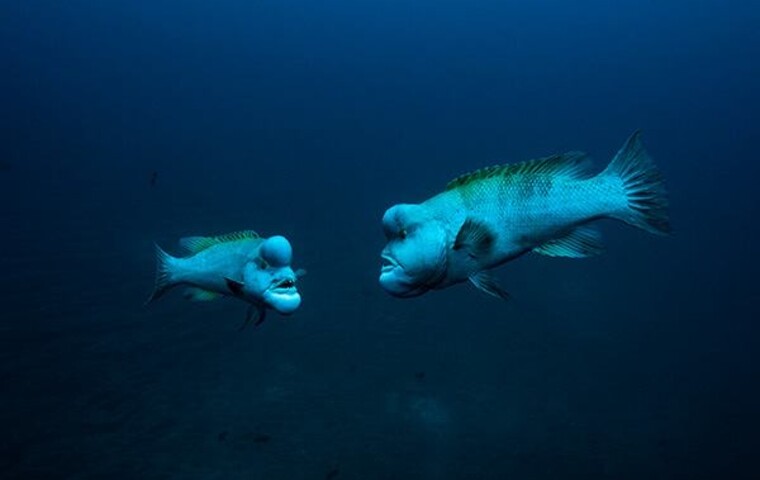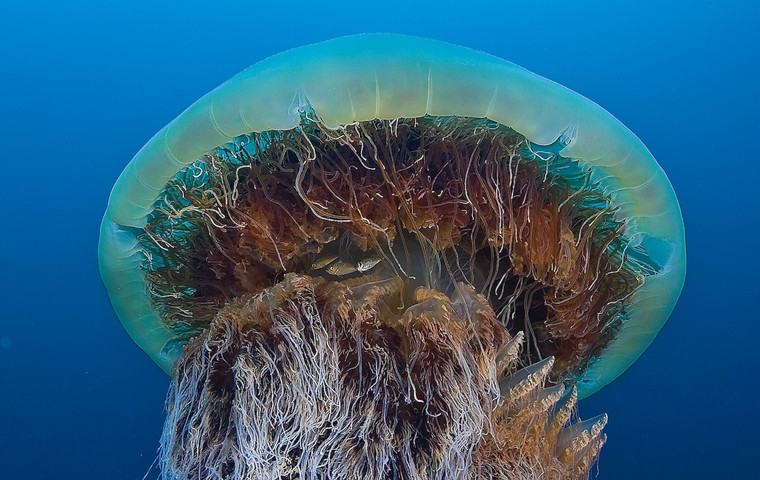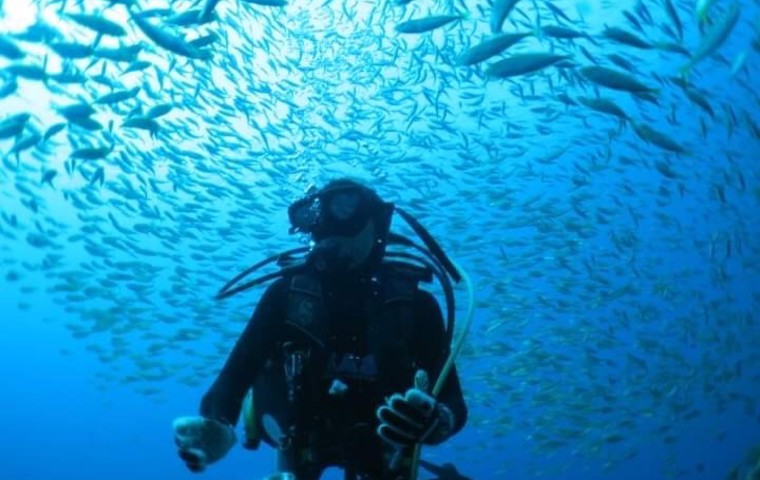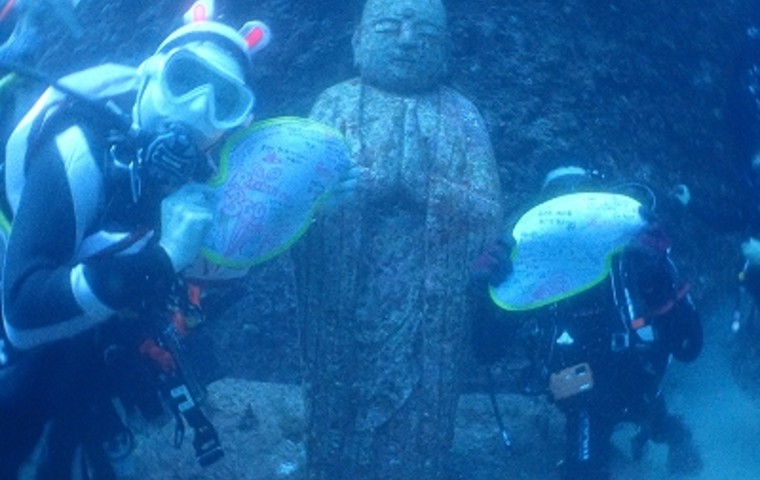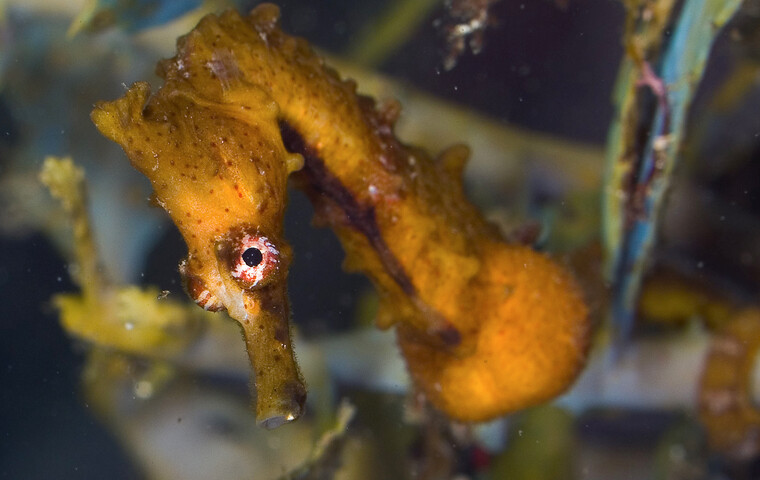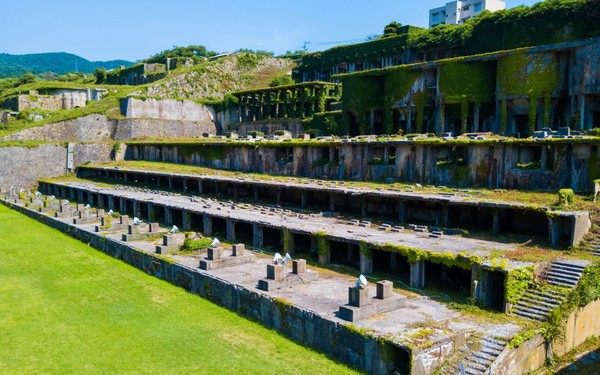Niigata Prefecture, Japan’s fifth-largest prefecture by geographic area, is located in the northern part of the Chūbu region of Honshu. It stretches about 240 km along the Sea of Japan, with a coastal plain between its mountains and the sea.
Sadogashima, or Sado Island, is a popular diving spot located west of Niigata. Touched by the warm Tsushima current that passes through the surrounding waters, the island’s winter is warmer than that of mainland Niigata.
The island is also notable for its history of mining. In 1601, miners discovered gold and silver veins in the Aikawa Tsuruko Ginzan. Sado Mine became the largest gold mine in Japan until its closure in 1989.
An Adventurous Dive at Sado Island
The warm Tsushima Current that runs strong in the summer season makes for a warmer climate than the mainland. During the other seasons, when this current runs weaker, the colder waters of the Japan Sea creep in around the island, making it a cold-water diving destination where cold-water marine life flourishes.
The seafloor is basically flat at 30 meters, covered by sand and small rocks, with large reefs reaching up towards the surface. The tide difference is minimal, as Japan’s water mass is much less than the Pacific Ocean. The difference is between 40-70 cm, making this a very pleasant area to dive.
The area can have excellent visibility, with an average of 20-25 meters, reaching upwards of 30 meters between August and September. However, between March and June, visibility can drop as low as 5 meters due to the
nutrient-filled runoff from the melting snow feeding plankton.
Diving Areas
Akaiwa/Red Rock (Max depth 27 m)
The number one diving spot as recommended by local dive guides.
This is where you can see the famous Asian sheepshead wrasse (Semicossyphus reticulatus) in large numbers, both male and female.
The seafloor, 27 meters down, is sandy and flat, with reefs rising up to 15 meters below the surface. On the seafloor you can see schools of Japanese jack mackerel (Trachurus japonicus) and pearl-spot chromis (Chromis notata) and many other marine animals such as the red-spotted grouper (Epinephelus akaara ). If you're lucky, you may even catch a Devil stinger (Inmicus Japonicus)!
Kofukujido (Max dept 24 m)
This site offers a small underwater cave diving experience.
Upon entry, you are guided down to the sandy seabed (24 meters). There you can observe the natural behavior of small creatures such as the jawfish (Opistognathidae) and bottle-tailed cuttlefish (Euprymna morsei). You will enter a small, well-lit underwater cave from the seafloor and ascend up to 18 meters, where you can enjoy the beautiful underwater terrain.
Soft Coral (Max depth 30m)
This location takes you to beautiful colonies of soft coral. You will find these colonies after diving down below 20 meters. They are at their most colorful from May through October.
Hirane Onsen/Hirane Spa (Max depth 18 m)
This site offers the unique experience of diving in an underwater onsen, or hot spring, located on the seabed at 18 meters deep. Be careful, though; the hot spring is boiling hot--about 80-90 degrees Celsius—and you will seriously be hurt if you touch the sand in the area. When you request this dive site, your dive guide may bring along some raw eggs to boil while you are under. You can enjoy these onsen eggs after returning to the surface. Besides the hot spring area, there is also a beautiful green eelgrass (Zostera marina) patch around 10 meters deep.
Akagame/Red Turtle (Max depth 26 m)
Akagame offers an exciting wreck diving experience for experienced Deepwater divers. Although the history of this 100-meter cargo wreck is not clearly known, it is said to be a cargo ship that washed ashore in the 1950's. From the rear, you can enter as far as 20 meters into its hull. The wreck is surrounded by a large school of fishes all year round.
